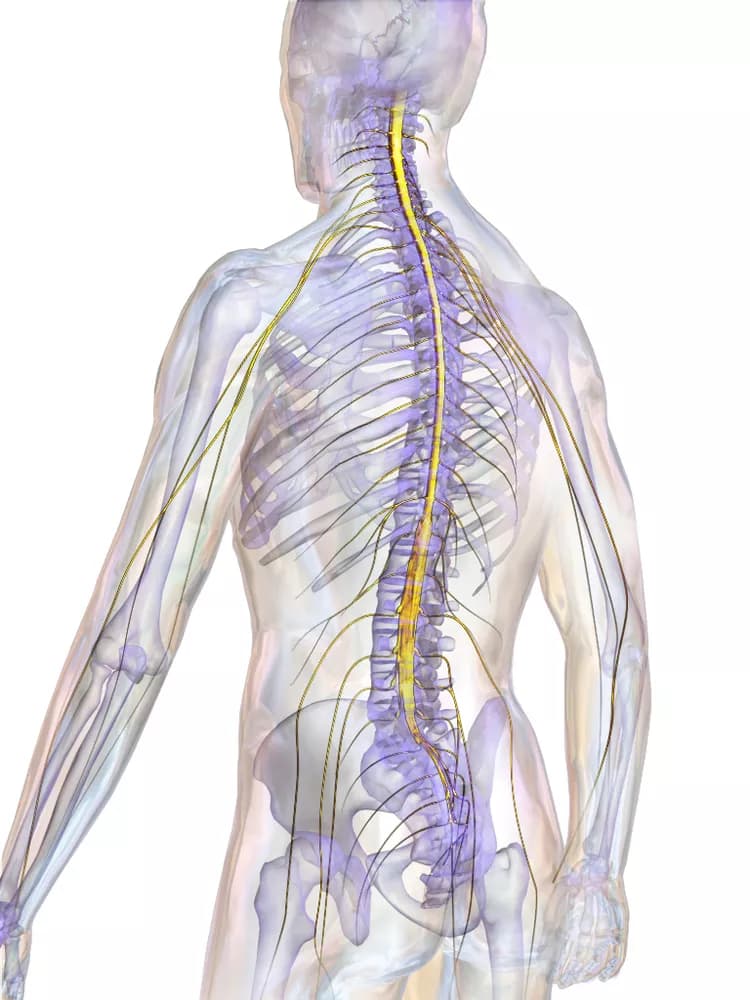
How To Grow A Spine
Like a string of pearls, the spine is made of a series of similar vertebrae. A so-called segmentation clock creates this repetitive arrangement in developing embryos: Each time the clock ticks, a vertebra starts to form.
In a paper published Sept. 21 in Cell, Harvard Medical School genetics professor Olivier Pourquié -- whose lab discovered the segmentation clock 20 years ago -- and colleagues report that they used mouse cells to reconstitute a stable version of this clockwork for the first time in a petri dish, leading to several new discoveries about where the clock is located, what makes it tick and how the vertebral column takes shape.
The team's insights not only illuminate normal vertebrate development but also could lead to improved understanding of human spinal defects such as scoliosis, said Pourquié, who is also the Harvard Medical School Frank Burr Mallory Professor of Pathology at Brigham and Women's Hospital and a principal faculty member of the Harvard Stem Cell Institute.
The researchers found that the segmentation clock lies quiescent in individual embryonic cells that give rise to the vertebrae, then clicks on all at once, collectively, when the cells reach a critical mass.
The researchers further discovered that the clock is controlled by two signals, Notch and Yap, that are sent and received by these cells.
On its own, they found, Notch starts the clock ticking by triggering cellular oscillations that release instructions to build structures that will ultimately become vertebrae. But Notch isn't the only signal in town.
It turns out that the cells' Yap chatter determines the amount of Notch required to activate the segmentation clock. If Yap is very low, then the clock runs on its own. If Yap levels are "medium," said Pourquié, then Notch is needed to start the clock. And if Yap levels are high, even a lot of Notch won't convince the clock to tick. Scientists call this an excitability threshold.
"If you stimulate the system a little, nothing happens. But if you stimulate it a little more and cross the threshold, then the system has a very strong response," explained Pourquié.
The researchers theorize that the segmentation clock works like other excitable biological systems that require certain thresholds to be met before sparking an action, such as neurons firing and calcium waves traveling across heart cells.
"There are probably similarities in the underlying circuits," Pourquié said.
The researchers were surprised to find that they could stop and restart the segmentation clock in several ways -- physically, by separating and re-aggregating the cells, and chemically, with a Yap-blocking drug.
"For many years, we have been trying to understand the clockwork underlying these oscillations," said Pourquié. "Now we have a great theoretical framework to understand what generates them and to help us make and test more hypotheses."
Materials provided by Harvard Medical School. Original written by Stephanie Dutchen. Note: Content may be edited for style and length.
Disclaimer: DoveMed is not responsible for the accuracy of the adapted version of news releases posted to DoveMed by contributing universities and institutions.
References:
Alexis Hubaud, Ido Regev, L. Mahadevan, Olivier Pourqui. (2017). Excitable Dynamics and Yap-Dependent Mechanical Cues Drive the Segmentation Clock. Cell. DOI: 10.1016/j.cell.2017.08.043
Related Articles
Test Your Knowledge
Asked by users
Related Centers
Related Specialties
Related Physicians
Related Procedures
Related Resources
Join DoveHubs
and connect with fellow professionals

0 Comments
Please log in to post a comment.